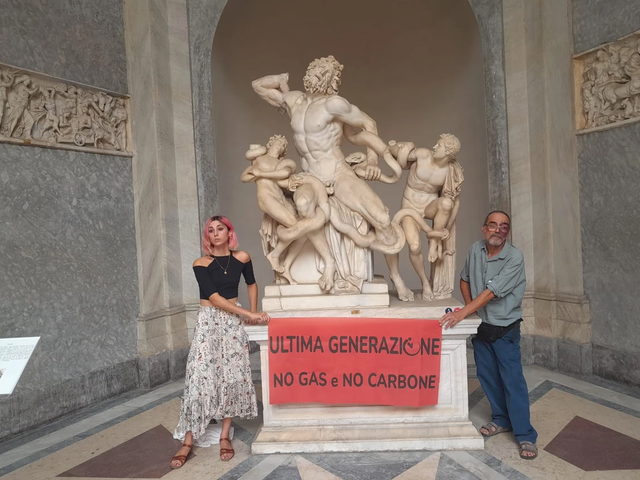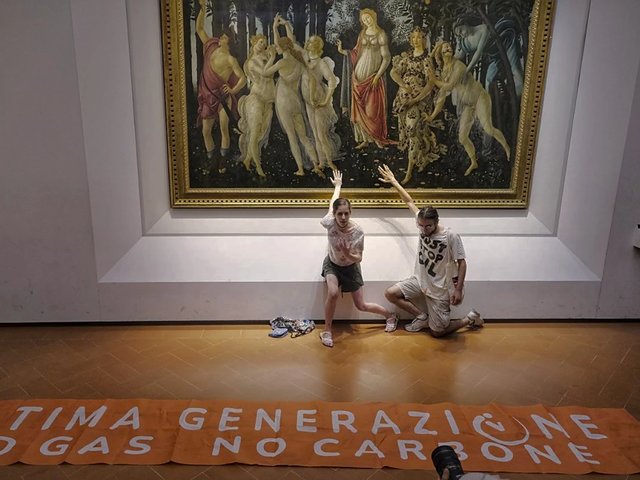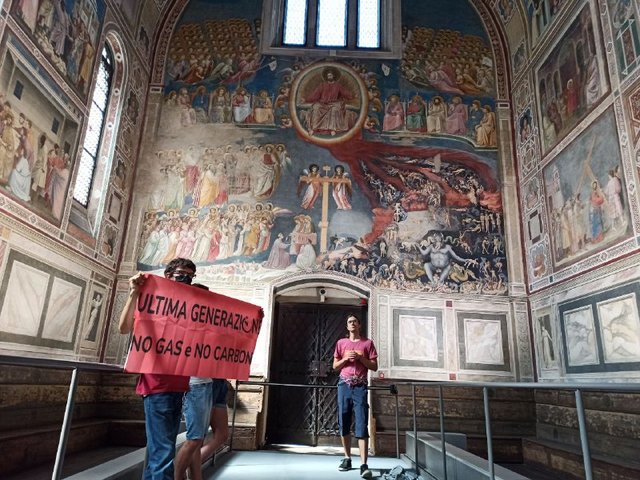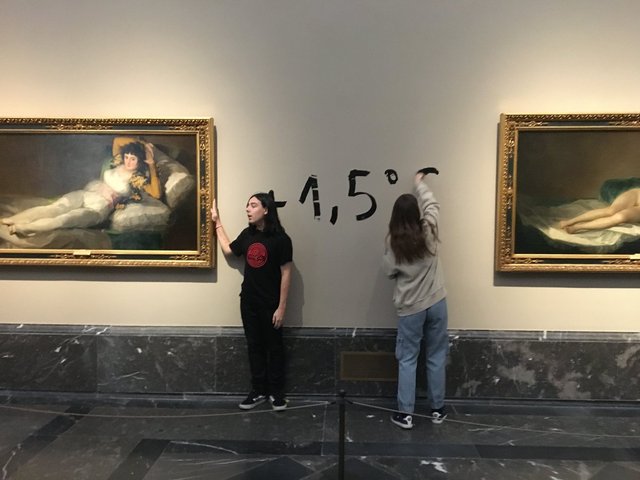Climate change activists have struck again in Italy. In a protest on 30 July, demonstrators from the Ultima Generazione group glued themselves to a plinth at the Museo del Novecento in Milan bearing the sculpture Unique Forms of Continuity in Space (1913) by the leading Futurist artist Umberto Boccioni.
Last month, protestors from the same group glued themselves to Sandro Botticelli's Primavera (around 1480) at the Gallerie degli Uffizi in Florence. A spokesperson for Ultima Generazione tells The Art Newspaper "There will be other actions [protests].”
In a film posted on Instagram, demonstrators are seen affixed to the plinth in the Milan museum. One of the activists says: “Scientists say that now is the time [to act] but the window is closing. Do you want to destroy yourselves?” In an online statement, Ultima Generazione adds: “We have to change direction. We glued ourselves to Boccioni's work because we can no longer afford to keep building economic progress. The progress that the Futurists hoped for is leading us towards mass extinction.”
The activists outline why they are targeting museums, saying: “Italy is internationally recognised as the cradle of artistic and museum heritage. Ultima Generazione turns to the world of art, launching a heartfelt appeal for our requests to be brought to the government’s attention by all relevant partners and organisations. The eco-climatic [crisis] will also have a tragic impact on conserving cultural heritage.”
The group is facing charges of “damage and resisting a public official”, says the spokesperson but the online videos show that “there was no violent attitude or resistance on the part of the activists”, he adds. Appropriate measures were taken to ensure Boccioni's masterpiece was not damaged, say the protestors. “The sculpture was not damaged because the activists stuck [themselves] to the structure that supports the work. We also consulted restorers who advised using a suitable adhesive,” the group says.
The interventions in Italy follow a number of similar actions in the UK at major museums and galleries. Last month, environmental activists from the group Just Stop Oil glued themselves to the celebrated Constable painting The Hay Wain (1821) at the National Gallery in London; Kelvingrove Art Gallery and Museum in Glasgow, Manchester Art Gallery and the Royal Academy of Arts in London were also targeted.
Boccioni’s Unique Forms of Continuity in Space (1913), considered a Futurist masterpiece, ripples outwards into the environment, penetrating the air. In his manifesto on sculpture, La Scultura Futurista published in April 1912, Boccioni stressed how his works fuse with their surroundings, saying: “We will break open the figure and enclose it in its environment.”






